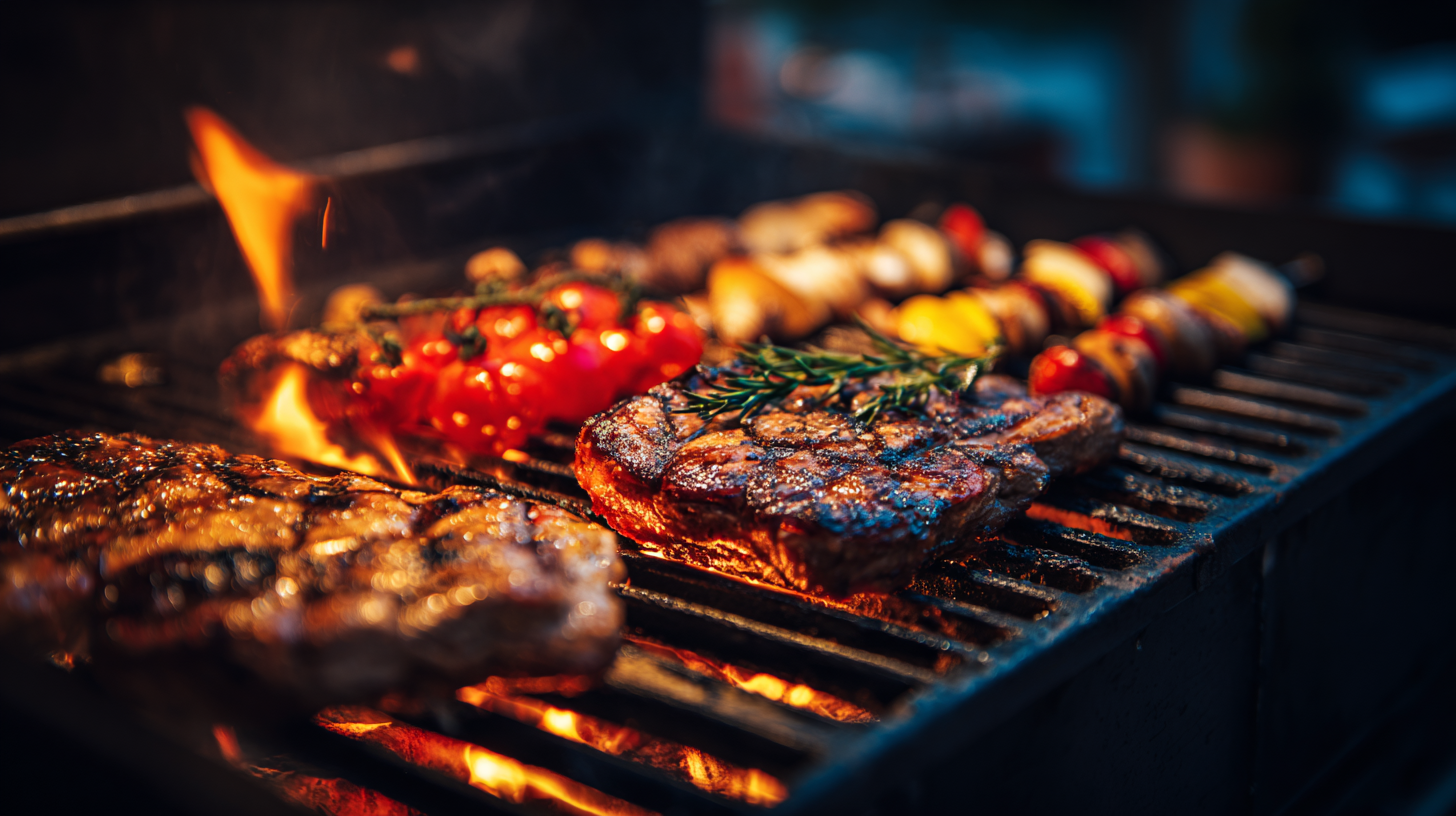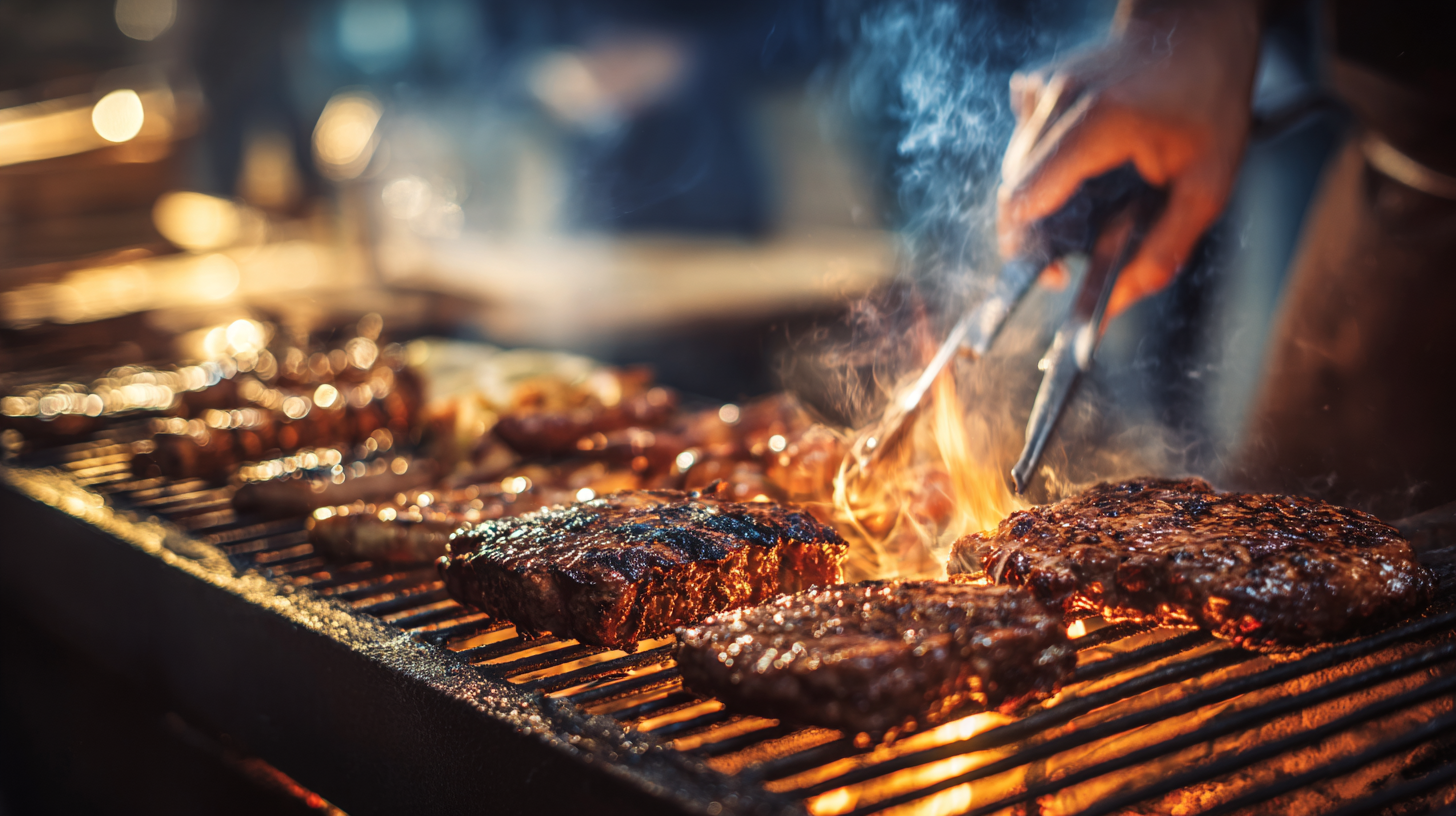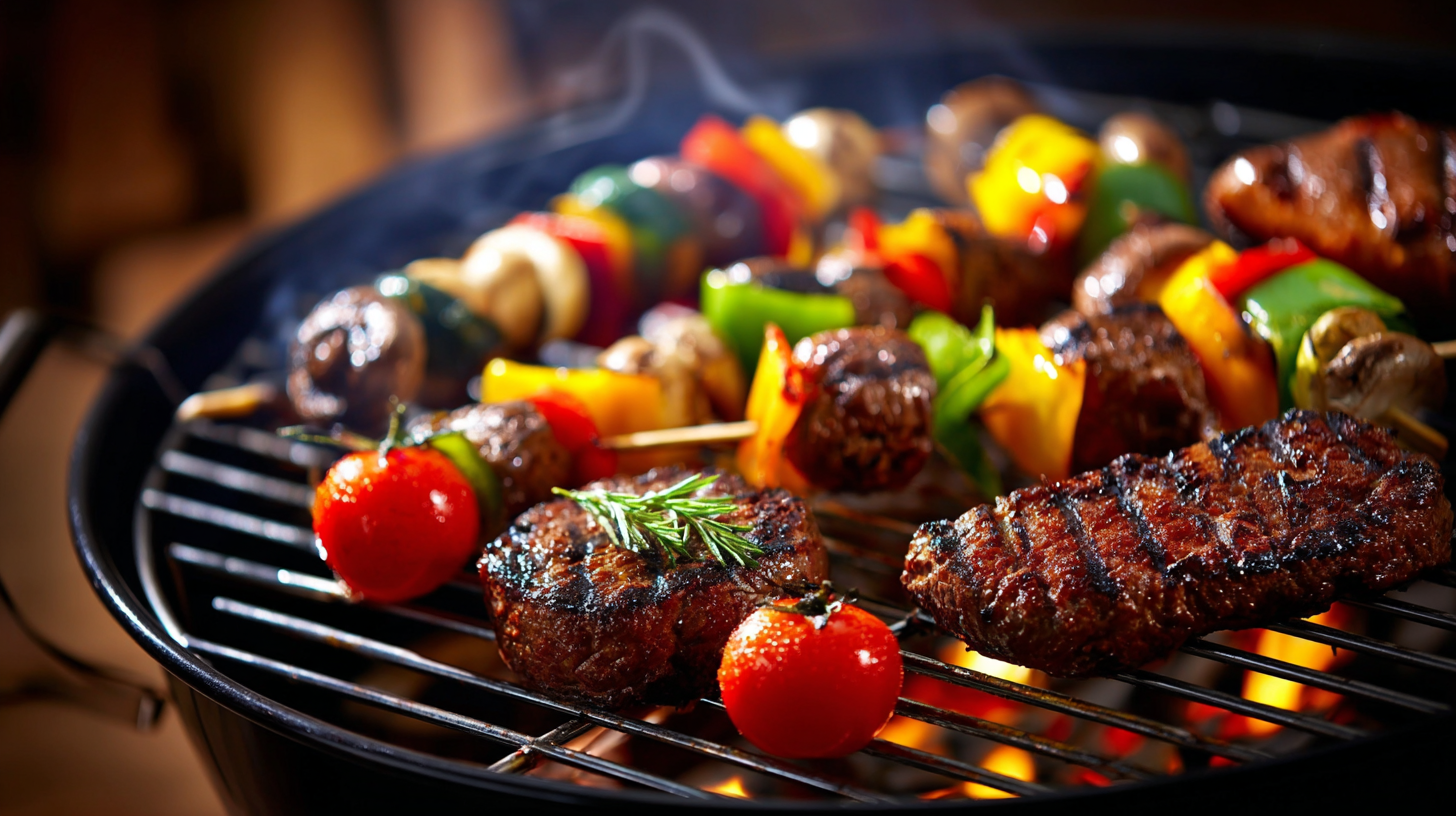How to Choose the Best Barbecue Grills for Your Outdoor Cooking Needs
As outdoor cooking continues to gain popularity, the market for barbecue grills is projected to reach a staggering $8.2 billion by 2025, according to industry reports. With this growth, discerning consumers are faced with the challenge of selecting the best barbecue grills that suit their individual cooking needs. The advancements in technology, coupled with an ever-expanding variety of designs and fuel options, make navigating the grill market both exciting and overwhelming. Whether you're a seasoned pitmaster or a backyard novice, understanding what to look for in barbecue grills—such as size, fuel type, features, and price range—can significantly enhance your outdoor cooking experience. This blog aims to provide you with essential insights and tips that will simplify your decision-making process and ensure that your investment in barbecue grills not only meets but exceeds your culinary aspirations.

Factors Influencing Your Barbecue Grill Selection: Insights from Industry Experts
When it comes to selecting the ideal barbecue grill for your outdoor cooking adventures, several key factors play a crucial role in making an informed choice. According to the National Barbecue Association, approximately 75% of American households own a grill, highlighting the widespread popularity of outdoor cooking. One major decision point is the type of fuel source, whether gas, charcoal, or electric. Each has its distinct advantages; for instance, gas grills provide convenience and quick start-up times, while charcoal grills are favored for imparting a richer flavor to grilled foods. A study by the Hearth, Patio & Barbecue Association indicates that 51% of grill owners prefer gas for its ease of use, making it a top choice for functionality.

In addition to fuel type, grill size and cooking surface area significantly affect your grilling experience. The size of your grill should correspond to the number of people you typically entertain. Industry experts suggest that a 300 to 500 square inch cooking surface accommodates an average gathering, allowing for a variety of foods to be grilled simultaneously. Furthermore, the choice of features—such as side burners, rotisserie attachments, and temperature gauges—can enhance your cooking capabilities. A comprehensive survey by Grill Master Insights reveals that consumers are increasingly investing in models with advanced features, with 65% of new grill buyers prioritizing versatility for their cooking styles. By considering these factors, you can tailor your grill selection to fit your specific outdoor culinary needs effectively.
Understanding Different Types of Barbecue Grills and Their Benefits for Outdoor Cooking
When it comes to outdoor cooking, understanding the different types of barbecue grills available is crucial for selecting the best option for your needs. Charcoal grills, gas grills, and electric grills each offer unique benefits. Charcoal grills provide that classic smoky flavor and are typically more affordable, making them a favorite among traditionalists. Gas grills, on the other hand, offer convenience and speed, allowing you to fire up the grill with the push of a button. If space and portability are concerns, electric grills can be a great option, providing versatility for small patios or balconies.
Tips for choosing the right grill include assessing your cooking style. If you enjoy slow-cooking and imparting rich flavors, a charcoal grill might be your best bet. For those who prioritize ease and consistency, a high-quality gas grill can save you time and effort. Additionally, consider the size of your cooking space and the number of people you typically entertain, as these factors will influence the grill size and type that will best suit your outdoor cooking ventures.
Don't forget to think about additional features that may enhance your grilling experience. Grills with side burners, temperature gauges, or even built-in smokers can open up new culinary possibilities. Researching accessories and maintenance needs can also ensure your investment serves you well for many seasons to come.
Key Features to Look for in High-Quality BBQ Grills: A Comprehensive Guide
When selecting the best barbecue grill for your outdoor cooking needs, it is essential to consider several key features that define high-quality models. First and foremost, fuel type plays a significant role; options such as charcoal, gas, pellet, and electric grills each come with unique benefits and cooking styles. Charcoal grills are cherished for their ability to produce a smoky flavor, while gas grills are popular for their convenience and quick heat-up times. Electric grills offer a practical solution for those confined by space or regulations, making them great for smaller patios or balconies.
In addition to fuel type, you should evaluate the grill’s construction materials, size, and cooking capacity. A durable grill made from stainless steel or heavy-duty materials will ensure longevity and withstand harsh weather conditions. Furthermore, consider the cooking area and the number of burners available—if you frequently host gatherings, a larger model with additional features like side burners or rotisserie capabilities will enhance your outdoor cooking experience. By focusing on these essential features, you’ll be well on your way to choosing a grill that meets your culinary needs and helps create unforgettable outdoor meals.

Comparative Analysis of Barbecue Grill Materials: Stainless Steel vs. Cast Iron
When it comes to choosing the perfect barbecue grill for outdoor cooking, understanding the materials involved is crucial. Two of the most popular materials are stainless steel and cast iron, each offering distinct advantages and considerations. Stainless steel grills are known for their durability and resistance to rust and corrosion, making them an ideal choice for those who want a low-maintenance option. They heat up quickly and evenly, providing a consistent cooking surface, while also offering a sleek aesthetic that many homeowners find appealing.
On the other hand, cast iron grills are celebrated for their heat retention and even cooking. Cast iron holds heat exceptionally well, allowing for a perfect sear and the ability to maintain high temperatures during cooking. This material, however, requires more maintenance as it needs to be seasoned regularly to prevent rust and ensure longevity. Grill enthusiasts often prefer cast iron for its ability to create beautiful grill marks and its rich flavor-enhancing properties. Ultimately, the choice between stainless steel and cast iron will depend on your cooking style, maintenance preference, and how often you plan to grill outside.
Comparative Analysis of Barbecue Grill Materials
The Importance of BTU Ratings and Cooking Area in Choosing Your Ideal Grill
When selecting the perfect barbecue grill for your outdoor cooking needs, understanding BTU ratings and cooking area is crucial. BTU, or British Thermal Units, measures the grill's heat output. A higher BTU rating typically indicates that the grill can reach higher temperatures more quickly and maintain consistent heat, which is essential for achieving that perfect sear on your steaks or evenly cooking your burgers. However, it's also important to consider the size of your grill; a model that generates a lot of heat but has a small cooking area may not be as practical for larger gatherings.
The cooking area, measured in square inches, determines how much food you can prepare at once. For families or those who frequently host barbecues, a larger cooking area allows for multitasking—grilling meats while simultaneously cooking vegetables or buns. If you often cook for a crowd, look for grills that offer expandable surfaces or multiple burners, enabling you to increase the cooking space as needed. Balancing BTU ratings with the right cooking area ensures you choose a grill that not only delivers powerful performance but also meets your outdoor cooking demands efficiently.
How to Choose the Best Barbecue Grills for Your Outdoor Cooking Needs
| Grill Type | BTU Rating | Cooking Area (sq. in.) | Fuel Type | Features |
|---|---|---|---|---|
| Gas Grill | 30,000 BTU | 450 | Propane | Electronic Ignition, Side Burner |
| Charcoal Grill | 20,000 BTU | 500 | Charcoal | Adjustable Vents, Smoker Box |
| Electric Grill | 1,800 Watts (approx. 6,000 BTU) | 300 | Electric | Temperature Control, Portable Design |
| Pellet Grill | 25,000 BTU | 600 | Wood Pellets | Wi-Fi Connectivity, Smoking Function |
| Infrared Grill | 30,000 BTU | 450 | Gas | Quick Preheat, Even Heat Distribution |
Stay Connected
Sign up today to keep up with the newest information from one of the Southeast’s leading suppliers of fluid handling equipment!








